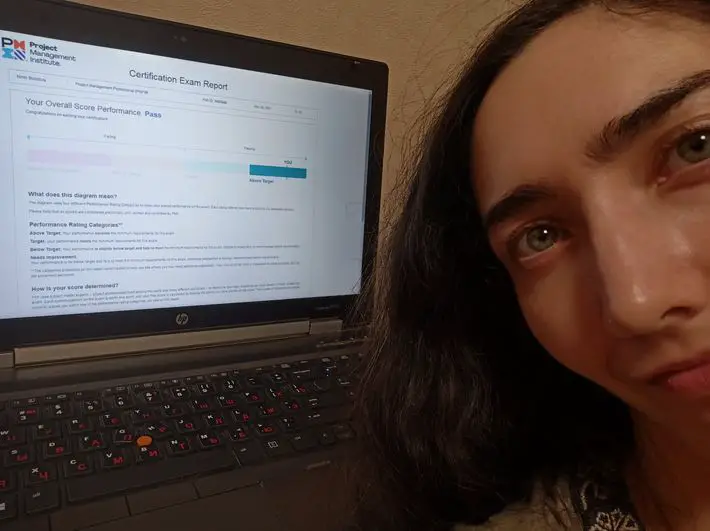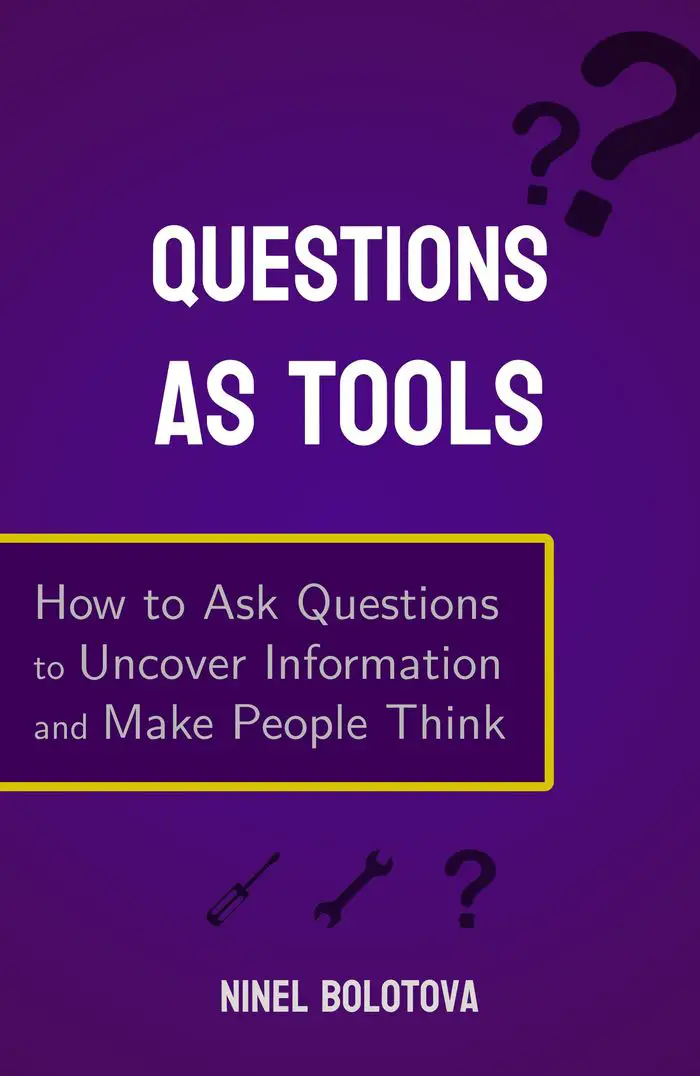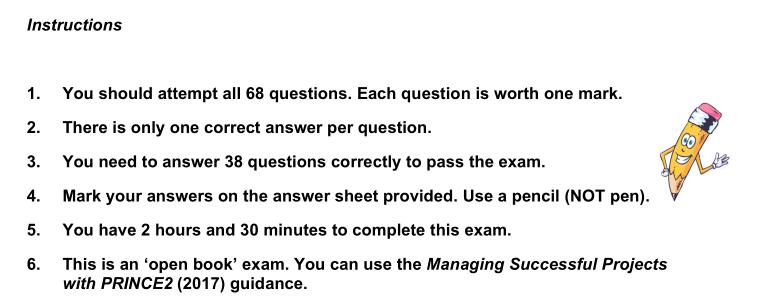Taking the PRINCE2 Exams Without a Textbook: an Experiment
You need to answer barely over half of the questions to pass the test.
That doesn’t sound like a challenge. Or does it?..
When I first learned that the pass mark for PRINCE2 certifications by Axelos is about 55%, it almost struck me as an unfair advantage. For example, the passing score for the Professional Scrum Master exam is 85%. That exam, however, doesn’t have any kind of proctoring.
PRINCE2 is proctored, but on the Practitioner level, you’re allowed to use the official manual. At 55%, is it even possible to fail?
I got curious if I could pass those exams using only my current knowledge, general logic, and minimum reading on the subject.
No courses, no textbook, no looking things up as you do the test. Will I still score enough points?
Let’s find out.
In this article, I’ll tell you about my results going through the sample exam papers or PRINCE2 and PRINCE2 Agile Foundation and Practitioner provided by Axelos.
Perhaps my observations and results would help you to:
- Get a better idea of which PRINCE2 certification you want to attempt
- Note some possible pitfalls and plan your studying
- Be confident about passing the PRINCE2 and PRINCE2 Agile professional certification exams


photo by @sam-lion on Pexels
PRINCE2 no-textbook exam experiment: the setup
Paying for the Foundation and Practitioner levels of both PRINCE2 and PRINCE2 Agile exams would’ve cost me a couple thousand dollars.
But fortunately, every PRINCE2 certification comes with a full sample version of the exam. The samples are available for download on their respective certification pages, in the Resources section at the bottom of the page:
- PRINCE2 Foundation full exam sample
- PRINCE2 Practitioner sample exam paper
- PRINCE2 Agile Foundation: a full set of exam questions
- PRINCE2 Agile Practitioner sample exam
Those materials are another reason for my impression that PRINCE2 exams are impossible to fail.
The syllabus and the answer rationales provided are detailed and give a very clear idea of what the test will be asking and what the logic of the answers is.
Related: A strategy to passing a professional certification exam on the first try.
Subject characteristics and test conditions
Here are a few points going into the experiment – what I already had, what I did and didn’t do:
- I had a deep dive into Scrum and Agile during my preparation for the Professional Scrum Master level II exam.
- While preparing for the PMP exam, I obtained a solid understanding of Waterfall project management according to PMBOK.
- I enjoy learning and have experience quickly digesting and using various kinds of new information.
I took PRINCE2 Foundation and Practitioner back-to-back and took PRINCE2 Agile Foundation and Practitioner the next day.


After taking the PMP exam
Materials used to prepare for the PRINCE2 experiment
My biggest concern is whether the information about the PRINCE2 method will be openly available. Is it a sacred or obscure knowledge you could only possess if you lay your hands on the book? Or are the various elements of the method described and discussed in various sources?
Besides the PRINCE2 Wikipedia page, my main source of information was the PRINCE2 wiki. It lays out quite a detailed and comprehensive explanation of the PRINCE2 method elements. I binged all pages within a few hours.
Another source was the PRINCE2 Agile wiki. The materials there are much briefer. I read through some articles there and looked up more information on specific concepts elsewhere.
But overall, I didn’t try to dive into PRINCE2 Agile as much as I did into the core PRINCE2 method. I was excited to start on the exams – just go in with what I had at that point and let the situation unfold however it would.
Note: PRINCE2 and PRINCE2 Agile wikis are created by an Accredited Training Provider, Management Plaza, so it’s no coincidence that all links to courses and exams lead there. P3.express, a project management framework created by the authors of the wiki, is also promoted there.
Related: PRINCE2 vs. PMP certification comparison.
Assumptions of the PRINCE2 exam experiment
I have four basic assumptions, one for each of the four tests I was about to take. Or, rather, the same assumption for PRINCE2 Foundation, PRINCE2 Practitioner, PRINCE2 Agile Foundation, and PRINCE2 Practitioner:
“Given the low passing score, it’s possible to obtain the pass mark with previous Waterfall and Agile knowledge and a few hours of preparation using free sources”.
But here are a couple of extra assumptions.
- I’ll score better on PRINCE2 Agile tests than on classic PRINCE2 because I’ve been familiar with Agile concepts for a while.
- I’ll score better on Practitioner exams than on their Foundation counterparts. Specific facts may slip my mind, but I could use logic to determine the correct answer to the scenario-based questions on the Practitioner level.
Let’s see which of my assumptions will prove true.

PRINCE2 Foundation: passing the test after reading the wiki
PRINCE2 Foundation passing score: 33/60 correct answers (55%).
Ninel’s score: 41/60 (68%).
Not the highest score, but a relatively confident pass.
PRINCE2 Practitioner: attempting the exam with almost no preparation
PRINCE2 Practitioner passing score: 38/68 correct answers (55%).
Ninel’s score: 39/68 (57%).
Passed, just barely.
When checking the answers, I felt like an action movie hero running across a crumbling stone bridge, jumping off at the last second. The result wasn’t certain until the very end, but I eventually made it.
PRINCE2 Agile Foundation: passing the sample exam successfully
PRINCE2 Agile Foundation passing score: 28/50 correct answers (55%).
Ninel’s score: 37/50 (74%).
Passed, with the best score overall.
The test asked a lot about the core concepts of PRINCE2, which I understood well at that point. I didn’t quite know what were the definitions of some of the PRINCE2 Agile-specific concepts mentioned, but still got most of such questions right using general Agile approaches.
PRINCE2 Agile Practitioner: could you pass it with logic alone?
PRINCE2 Agile Practitioner passing score: 30/50 correct answers (60%).
Ninel’s score: 27/50 (54%).
Failed.
Like with PRINCE2 Practitioner, it often felt like a gamble.
When I was checking the answers, there were a few glimpses of hope when a stretch of correct answers occurred, but after a final dry stretch, I fell a few points short.
There were multiple occasions where I couldn’t confidently decide between the possible options, or even when no option felt “right”. This, of course, indicates that I didn’t have a solid understanding of the material.
Did my PRINCE2 exam assumptions come true?
So, my “passing the exam” assumption turned out correct three times out of four. Here are my exam scores, in ascending order:
- PRINCE2 Agile Practitioner: 54%.
- PRINCE2 Practitioner: 57%.
- PRINCE2 Foundation: 68%.
- PRINCE2 Agile Foundation: 74%.
Do these results confirm or disprove my extra assumptions?
1. Scoring better on PRINCE2 Agile tests than on classic PRINCE2
That was partially true.
The PRINCE2 Agile Foundation score was better than Practitioner and the highest overall.
However, the PRINCE2 Agile Practitioner score was the lowest and didn’t hit the pass mark.
2. PRINCE2 Practitioner exam scores will be higher than Foundation test scores
False.
Before taking the tests, I actually checked and answered a few questions from the PRINCE2 Practitioner exam paper when writing the article about PRINCE2 exam preparation.
But by the time I wrote the guide to pass the PRINCE2 Agile exam, I was committed to the experiment, so I didn’t look at the sample paper beforehand.
The current assumption was based on an idealistic view of a scenario-based exam. However, while there was a scenario to give context, the questions themselves mostly weren’t the “what’s the best course of action in this situation” type – rather, the test asked “how is this action interpreted through the lens of a specific concept of PRINCE2 Agile”.
Which, admittedly, PRINCE2 Agile is all about. It’s an interface between the classic PRINCE2 method and the Agile ways of delivery, and that’s precisely what it’s testing.
But I underestimated just how specialized the PRINCE2 Agile Practitioner exam is, so I wasn’t tuned to that type of questions.
However, reading the explanations for the answers, it was fascinating to get a deeper look into the blend of a traditional project management method with Agile.
It felt like looking into the source code of elaborate software that is very specialized and most people who have it installed actively use only a handful of its functions. If nothing else, I admire it as a piece of art.
Conclusions and lessons learned
Professional certification exams aren’t just about scoring on a test and getting a badge. What’s important is the information and insights you obtained.
Enhancing your resume with a credential is a bonus.
Challenging myself to take some of the most prestigious project management professional certification tests was a delightful experience. I learned new things, both about the PRINCE2 method and the PRINCE2 exams by Axelos.
Here are a few notes and suggestions for those who are considering the PRINCE2 or PRINCE2 Agile certifications:
- If you have a relevant textbook, it’s guaranteed that you pass the exam at any level.
- To get more questions right, analyze the right and wrong answers from the exam papers and understand their angle.
- PRINCE2 Agile Foundation has more to do with the Agile spirit than PRINCE2 Agile Professional.
Keep in mind that since 2023, the Foundation-level certifications by Axelos also need to be renewed every three years.
Related: Is my professional certifications worth renewing?
The biggest mystery of PRINCE2 exams: “use a pencil, NOT pen”
A thing that baffled me the most is the line of instruction in all sample papers, meant for in-person exams:
“Mark your answers on the answer sheet provided. Use a pencil (NOT pen).”


Pencil image added by me
My initial guesses why this may be:
- Gives you a chance to change your mind, erase and correct the answers. The policies about using the eraser aren’t explicitly stated, however.
- The ink seeps through the paper, leaves markings on the other side, and makes the test harder to check somehow.
- Pencil markings can be completely erased after the test and the answer sheet repurposed for another test taker, thus saving paper and helping the environment.
But at the moment, “why pencil” is the only question from the PRINCE2 exam sample paper that remains unanswered.